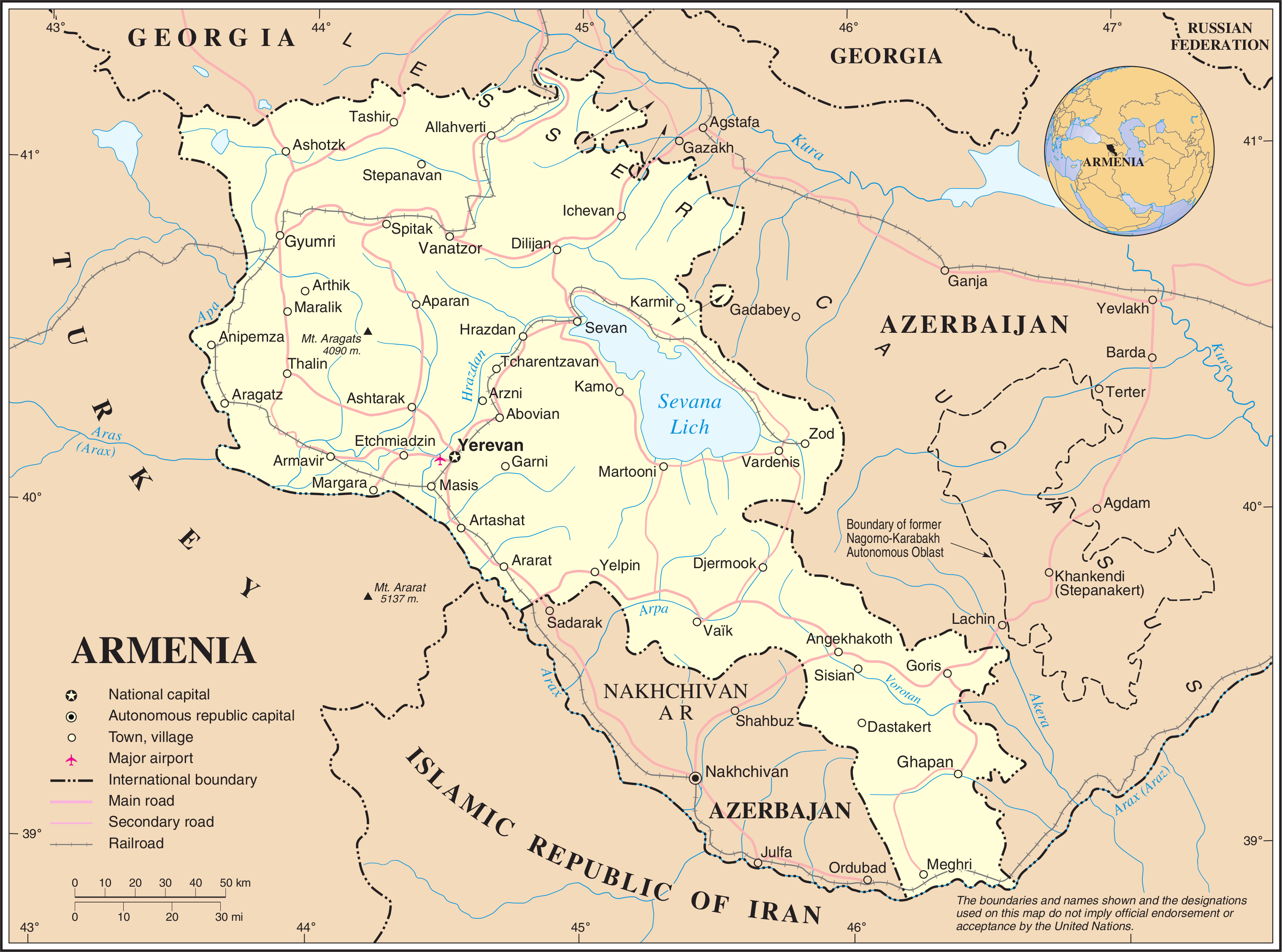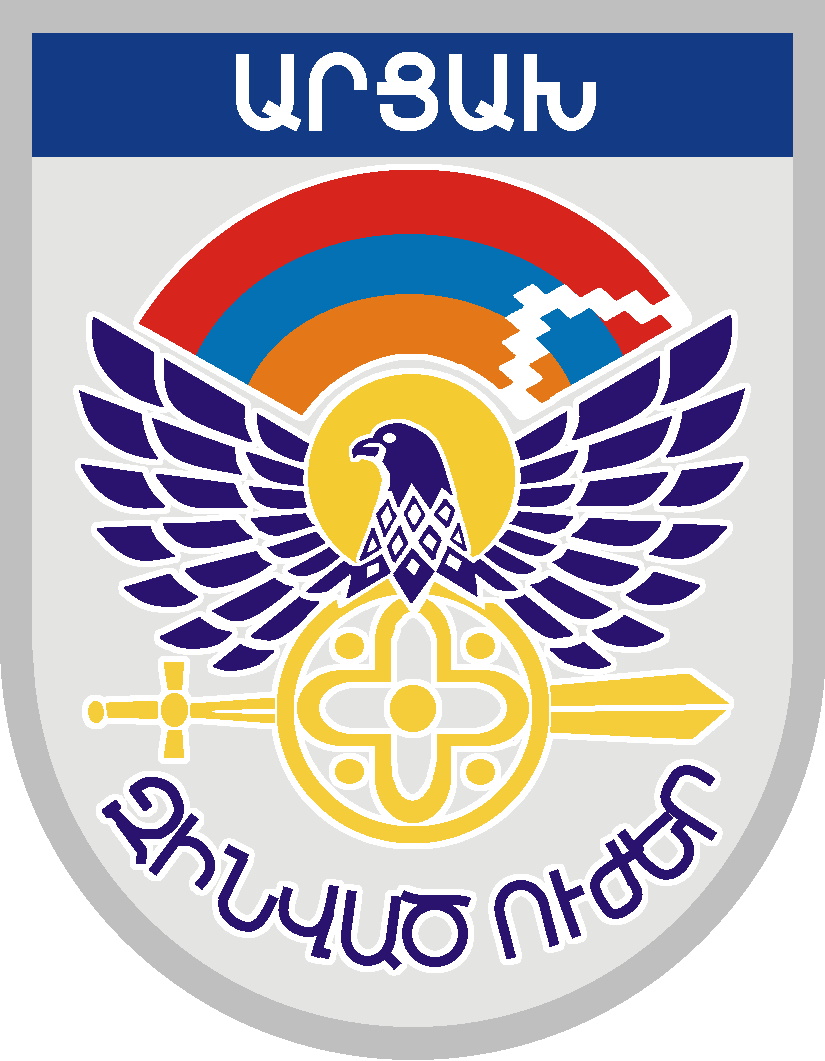|
Sadakhlo
Sadakhlo (Georgian: სადახლო, az, Sadaxlı) is a village in Georgia located in the southern part of country in the administrative territory of Marneuli Municipality (Kvemo Kartli Region) at the border with Armenia. The village is about south of the municipal center Marneuli and south of capital Tbilisi and is situated along the left bank of the Debeda river. Sadakhlo is the largest village in Georgia, and is the center of the eponymous administrative community (თემი, temi) that includes 4 other nearby villages: Burma, Tazakendi, Molaoghli, and Khuldara. The Sadakhlo market played a remarkable role in the interaction between Azerbaijanis and Armenians, in light of the Nagorno-Karabakh conflict. Sadakhlo is almost entirely populated with Azerbaijanis, and is an important bordertown with Armenia. Since Georgia took a neutral stance in this conflict, it became a neutral territory in which both peoples could freely and safely interact with each other. Six kilo ... [...More Info...] [...Related Items...] OR: [Wikipedia] [Google] [Baidu] |
S7 Highway (Georgia)
The Georgian S7 route (Georgian: საერთაშორისო მნიშვნელობის გზა ს7, ''Saertashoriso mnishvnelobis gza S7'', road of international importance), also known as Marneuli–Sadakhlo ( Armenian border), is a "road of international importance" within the Georgian road network and runs from Marneuli to the border with Armenia near Sadakhlo over a distance of , making it the shortest S-highway in Georgia. After crossing the Georgian-Armenian border the highway continues as M6 to Vanadzor, Armenia's third largest city. The S7 highway is entirely part of European route E001 and the Asian Highway AH81 and connects with the Georgian S6 highway in Marneuli. Furthermore, the road is entirely located in Marneuli Municipality (Kvemo Kartli region) and built as a two lane road. Plans have been developed and international funds have been raised to upgrade the southern part of the S7 to a 2x2 motorway, while a new motorway section will connect ... [...More Info...] [...Related Items...] OR: [Wikipedia] [Google] [Baidu] |
Marneuli Municipality
Marneuli ( ka, მარნეულის მუნიციპალიტეტი, az, Marneuli Bələdiyyəsi) is a municipality in Georgia, in the region of Kvemo Kartli. Its administrative center and main town is Marneuli. Location Marneuli Municipality is situated in south-east part of country near to border with Azerbaijan and Armenia. The size of the municipality is 935 km2. Most part of its territory is located in Marneuli lowland (between 350 and 600 meters above sea level). The highest point is Garadagh mountain (1416 m.). Geography and Climate Marneuli municipality is located in the eastern part of Kvemo Kartli. Its administrative center is the city of Marneuli. Marneuli borders Bolnisi Municipality to the west, Tetritskaro Municipality to the north, Gardabani Municipality to the northeast, Azerbaijan and Armenia to the south. The central part of the municipality is surrounded by the accumulated plains of Marneuli. The Iaghluji highland forms the geograp ... [...More Info...] [...Related Items...] OR: [Wikipedia] [Google] [Baidu] |
European Route E001
European route E001 is a European B class road in Georgia and Armenia part of the United Nations international E-road network, connecting the cities Marneuli - Sadakhlo - Bagratashen - Vanadzor. Route * **: Marneuli () - Sadakhlo * **: Bagratashen - Vanadzor Vanadzor ( hy, Վանաձոր) is an urban municipal community and the third-largest city in Armenia, serving as the capital of Lori Province in the northern part of the country. It is located about north of the capital Yerevan. As of the 2011 cen ... () External links UN Economic Commission for Europe: Overall Map of E-road Network (2007) {{E-road International E-road network Roads in Georgia (country) E001 ... [...More Info...] [...Related Items...] OR: [Wikipedia] [Google] [Baidu] |
Armenia–Georgia Border
The Armenia–Georgia border ( hy, Հայաստան-Վրաստան սահման, translit=Hayastan–Vrastan sahman, ka, სომხეთ-საქართველოს საზღვარი, ') is the international boundary between Armenia and Georgia. It is in length and runs from the tripoint with Turkey in the west to the tripoint with Azerbaijan in the east. Description The border starts in the west at the tripoint with Turkey and proceeds overland to the tripoint with Azerbaijan via a series of irregular lines and a small section in the east along the Debed river. The western, more mountainous section of the boundary contains two lakes situated quite close to the frontier – Madatapa (in Georgia) and Arpi (in Armenia). History During the 19th the Caucasus region was contested between the declining Ottoman Empire, Persia and Russia, which was expanding southwards. Russia formally annexed the eastern Georgian Kingdom of Kartli and Kakheti in 1801, followed by the ... [...More Info...] [...Related Items...] OR: [Wikipedia] [Google] [Baidu] |
List Of Roads In Georgia (country)
Georgia's trunk highways form a network of internationally oriented roads that connects the Georgian capital of Tbilisi, home to roughly a third of the national population, with neighboring countries. This is the backbone for a network of domestic trunk roads connecting vital regions with each other and the capital. The total length of the road network in Georgia is in 2021. The roads of "international importance" and "national importance" are managed by the Roads Department (Georoad) of the Ministry of Regional Development and Infrastructure of Georgia. Roads of international importance The "roads of international importance" are the highest category of roads in Georgia. They are denoted by the prefix ს (Georgian for S), which stands for "საერთაშორისო მნიშვნელობის გზა" (Saertashoriso mnishvnelobis gza, road of international importance). Direction and destination signs in Georgia are in both Georgian and Latin scripts, but t ... [...More Info...] [...Related Items...] OR: [Wikipedia] [Google] [Baidu] |
Debed
The Debed ( hy, Դեբեդ) or Debeda ( ka, დებედა) is a river in Armenia and Georgia. It also serves as a natural boundary between Armenia and Georgia at the village Sadakhlo, Georgia. It is long, and has a drainage basin of . The river originates in Armenia and is formed at the confluence of the Dzoraget and Pambak. It ends in Georgia where it feeds into the Khrami, a tributary of Kura. See also * * |
Akhkerpi
Akhkerpi ( ka, ახკერპი) is a village in Georgia’s Kvemo Kartli region, located in the extreme southwestern part of Marneuli Municipality at the border with Armenia. The village is about southwest of the municipal center Marneuli and south of capital Tbilisi. Achkerpi is the center of the eponymous administrative community (თემი, ''temi'') that includes the nearby villages of Chanakhchi and Verkhviani. Achkerpi has a vehicular border crossing with Armenia, which is the least used border checkpoint in Georgia with 133 incoming foreign travellers in 2019. In the border area with Armenia a few religious-cultural heritage sites are claimed by both countries, which has led to friction between the Georgian and Armenian churches. Demography According to the last census of 2014, the village of Achkerpi had 610 residents. Two of the three villages that make up the administrative Achkerpi community are mono-ethnic Armenian except for a few Georgians. The settlemen ... [...More Info...] [...Related Items...] OR: [Wikipedia] [Google] [Baidu] |
Countries Of The World
The following is a list providing an overview of sovereign states around the world with information on their status and recognition of their sovereignty. The 206 listed states can be divided into three categories based on membership within the United Nations System: 193 member states of the United Nations, UN member states, 2 United Nations General Assembly observers#Present non-member observers, UN General Assembly non-member observer states, and 11 other states. The ''sovereignty dispute'' column indicates states having undisputed sovereignty (188 states, of which there are 187 UN member states and 1 UN General Assembly non-member observer state), states having disputed sovereignty (16 states, of which there are 6 UN member states, 1 UN General Assembly non-member observer state, and 9 de facto states), and states having a political status of the Cook Islands and Niue, special political status (2 states, both in associated state, free association with New Zealand). Compi ... [...More Info...] [...Related Items...] OR: [Wikipedia] [Google] [Baidu] |
Gyumri
Gyumri ( hy, Գյումրի, ) is an urban municipal community and the second-largest city in Armenia, serving as the administrative center of Shirak Province in the northwestern part of the country. By the end of the 19th century, when the city was known as Alexandropol,; hy, Ալեքսանդրապոլ it became the largest city of Russian-ruled Eastern Armenia with a population above that of Yerevan. The city became renown as a cultural hub, while also carrying significance as a major center of Russian troops during Russo-Turkish wars of the 19th century. The city underwent a tumultuous period during and after World War 1. While Russian forces withdrew from the South Caucasus due to the October Revolution, the city became host to large numbers of Armenian refugees fleeing the Armenian Genocide, in particular hosting 22,000 orphaned children in around 170 orphanage buildings. It was renamed to Leninakan; russian: Ленинакан during the Soviet period and became a major i ... [...More Info...] [...Related Items...] OR: [Wikipedia] [Google] [Baidu] |
Yerevan
Yerevan ( , , hy, Երևան , sometimes spelled Erevan) is the capital and largest city of Armenia and one of the world's List of oldest continuously inhabited cities, oldest continuously inhabited cities. Situated along the Hrazdan River, Yerevan is the administrative, cultural, and industrial center of the country, as its primate city. It has been the Historical capitals of Armenia, capital since 1918, the Historical capitals of Armenia, fourteenth in the history of Armenia and the seventh located in or around the Ararat Plain. The city also serves as the seat of the Araratian Pontifical Diocese, which is the largest diocese of the Armenian Apostolic Church and one of the oldest dioceses in the world. The history of Yerevan dates back to the 8th century BCE, with the founding of the fortress of Erebuni Fortress, Erebuni in 782 BCE by King Argishti I of Urartu, Argishti I of Urartu at the western extreme of the Ararat Plain. Erebuni was "designed as a great administrative an ... [...More Info...] [...Related Items...] OR: [Wikipedia] [Google] [Baidu] |
Azerbaijanis In Georgia
Azerbaijanis in Georgia or Georgian Azerbaijanis ( az, Gürcüstan azərbaycanlıları, ka, ქართველი აზერბაიჯანლები) are Georgian citizens of ethnic Azerbaijani background. According to the 2014 census, there are 233,024 ethnic Azerbaijanis living in Georgia. Azerbaijanis comprise 6.5% of Georgia's population and are the country's largest ethnic minority, inhabiting mostly rural areas like Kvemo Kartli, Kakheti, Shida Kartli and Mtskheta-Mtianeti. There is also a historical Azerbaijani community in the capital city of Tbilisi (previously known as Tiflis) and smaller communities in other regions. There were some tensions in the late 1980s in the Azerbaijani-populated regions of Georgia; however, they never escalated to armed clashes.Cornell, Svante E.''Autonomy and Conflict: Ethnoterritoriality and Separatism in the South Caucasus – Case in Georgia''. Department of Peace and Conflict Research, Report No. 61. p. 160. University of Upp ... [...More Info...] [...Related Items...] OR: [Wikipedia] [Google] [Baidu] |
Nagorno-Karabakh Conflict
The Nagorno-Karabakh conflict is an ethnic and territorial conflict between Armenia and Azerbaijan over the disputed region of Nagorno-Karabakh, inhabited mostly by ethnic Armenians, and seven surrounding districts, inhabited mostly by Azerbaijanis until their expulsion during the First Nagorno-Karabakh War. Some of these territories are ''de facto'' controlled, and some are claimed by the breakaway Republic of Artsakh although they have been internationally recognized as part of Azerbaijan. The conflict has its origins in the early 20th century, but the present conflict began in 1988, when the Karabakh Armenians demanded transferring Karabakh from Soviet Azerbaijan to Soviet Armenia. The conflict escalated into a full-scale war in the early 1990s which later transformed into a low-intensity conflict until four-day escalation in April 2016 and then into another full-scale war in 2020. A ceasefire signed in 1994 in Bishkek was followed by two decades of relative stability ... [...More Info...] [...Related Items...] OR: [Wikipedia] [Google] [Baidu] |


.jpg)


